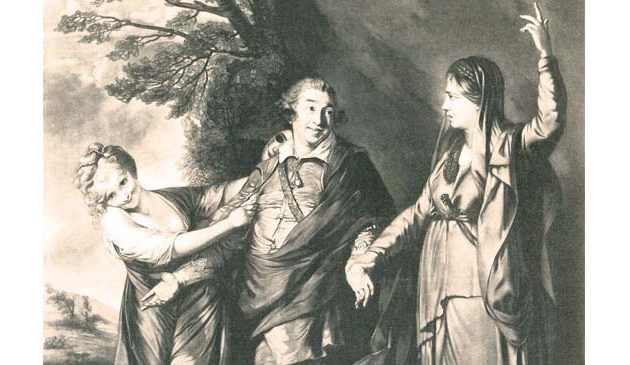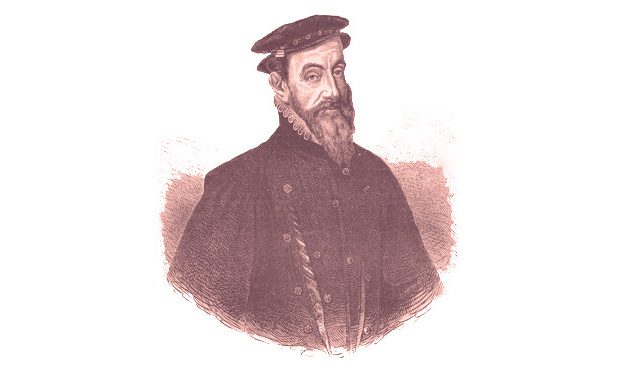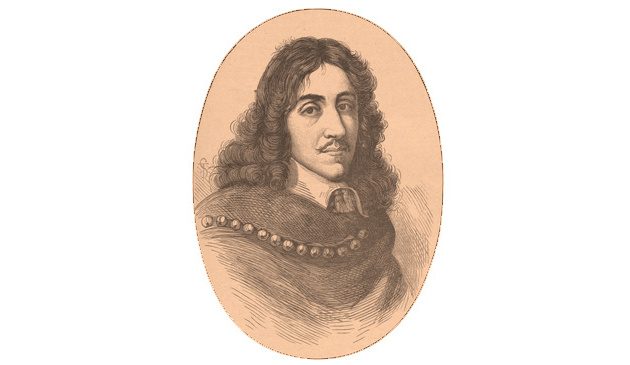Vauxhall Gardens and Jonathan Tyers

This is the scene confronting visitors as they arrived through the narrow hallway of the Proprietor’s House into Vauxhall Gardens. The Grand Walk stretches into the distance, a globe lamp hanging from each tree. On the right is the Grove, with the tall structure of the Orchestra, which was rebuilt in this style for the 1758 season. In the distance is a two dimensional tromp l’oeil wooden obelisk decorated by Francis Hayman. Part of the statue of Handel can be seen on the far right.
Over a period of time Tyers added new structures within the gardens, some permanent and others temporary. The first of these was probably the Prince’s Pavilion adjoining the Proprietor’s House in around 1732 and containing a richly-decorated Great Room salon. It was frequently used by the Prince of Wales and his entourage. During the 1740s there was a revival in interest in Shakespeare’s plays, particularly since David Garrick’s sensational interpretation of Richard III at the Goodman’s Fields theatre in 1741. In the mid-1740s the theatrical scene-painter Francis Hayman painted four large paintings on Shakespearean themes to decorate the portico of the Prince’s Pavilion.
Two years after the creation of the Orchestra an adjoining building was erected to house a large organ. Special care was taken with the acoustics to ensure it could be heard throughout the estate and the organ concerto became a special part of the evening entertainment. The Orchestra was rebuilt and enlarged as the Gothic Orchestra in 1757, incorporating the organ.
A substantial refurbishment of the gardens took place in time for the opening of the 1736 season, with the Grove that surrounded the Orchestra cleared of trees to seat up to 3,000 people. To the east of the organ building a fanciful Turkish Tent was erected, an undercover dining area with an exotic roof. Rows of supper boxes, surrounding the Grove and open on each side, were added to replace those inherited by Tyers that had been scattered around the arbours.
In the early 1740s solid walls were added to each supper box and a series of large paintings were created to decorate the upper half of each box. These were mostly designed by Hayman and the engraver and illustrator Hubert-François Gravelot, two artists from the St. Martin’s Academy and Slaughter’s, as well as Hogarth, and painted by Academy students. In alignment with the work of Hogarth, the subjects of the paintings were of contemporary everyday incidents that appeared to be real events, with almost life-size characters, and they created a talking-point for diners. There were also four maritime paintings of naval actions by Hogarth’s friend and fellow governor of the Foundling Hospital, Peter Monamy. Some of the supper box paintings remained in situ for about a hundred years, albeit in poor condition, and fifteen still survive, mostly in public collections.
By 1740 Vauxhall was the most fashionable attraction of the London summer season for all levels of society. Around 1,000 visitors attended on a normal night for the 100-day season, each paying one shilling entrance fee, or one guinea for a season ticket, plus the cost of food and drinks. Special gala occasions, such as a royal visit, brought up to 11,000 attendees.
The success of the Vauxhall gardens encouraged others to open new venues on the other side of the Thames, such as the Marylebone Gardens and Ranelagh at Chelsea. Unlike Vauxhall, the indoor Ranelagh was not dependent on the unreliable weather and that may have prompted Tyers to introduce the Rotunda for the 1748 season. This was a grand hall, immediately to the left on entering the gardens. It was in the same style, but smaller than, its counterpart at Ranelagh. Its whimsical design included 16 busts of “eminent Personages, antient and modern” together with the same number of mirrors, allowing visitors to view 16 reflections of themselves with the busts of the celebrated people. The room was lit by a vast chandelier of 72 candles. Over many decades the interior of the Rotunda was redecorated and transformed into new styles such as an Indian garden or a circus hippodrome.
The Rotunda and the structures that followed gave people an impression of travelling to an exotic and magical place and continually provided new attractions to draw visitors. To achieve that, they had to be something new, different, and special. Henry Fielding wrote of the Vauxhall Gardens in his 1751 novel Amelia:
The extreme Beauty of this Place is well known to almost every one of my Readers; and happy is it for me that it is so; since to give an adequate Idea of it, would exceed my Power of Description.
Tyers commissioned very talented artists and designers, most of whose names are largely lost to us. Where we know the names, it is clear he chose people from outside of the mainstream of architecture, an example being George Michael Chaser, the creator of the Rotunda whose normal work was in designing snuff boxes and watch cases.
It was important to encourage people to spend money on food and drink and to that end Tyers looked for ways to increase the number of supper boxes. Three piazzas were formed, each enclosed by a fanciful semi-circular colonnade containing supper boxes. These were: the Temple of Comus piazza on the north side of the gardens, later remodelled and renamed the Chinese Pavilions; the Handel Piazza on the south side, containing the Handel statue; and the Gothic Piazza on the west side facing along the Grand South Walk.


